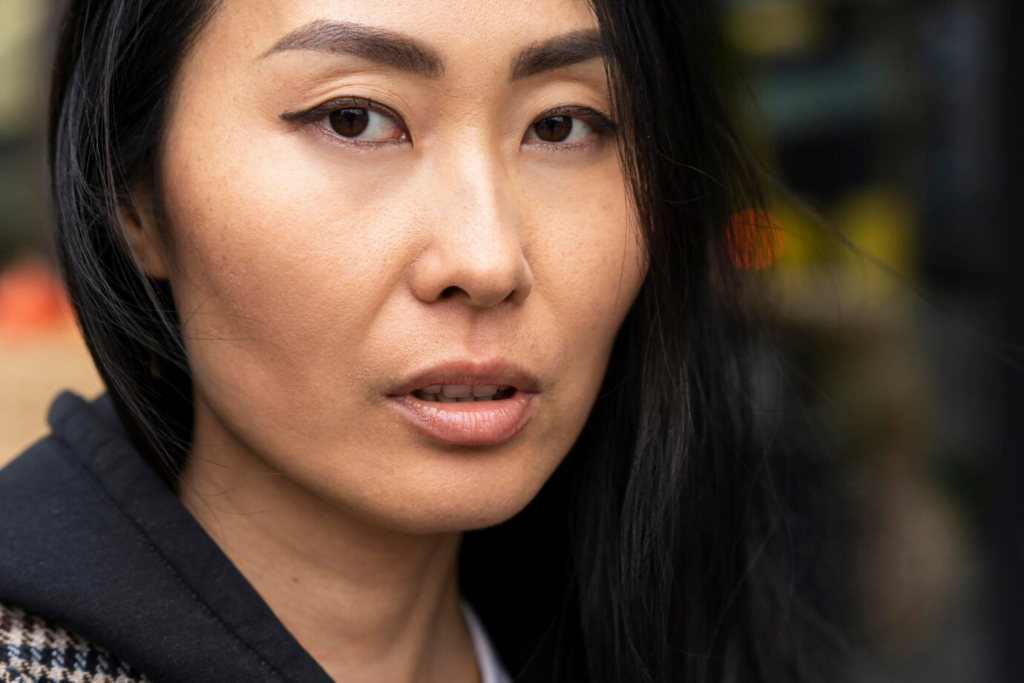How does facial bone structure in Asians affect FFS approaches? Considering Facial Feminization Surgery (FFS) but worried your Asian features might throw a wrench in the plans? Here’s the key: bone structure! This post will break down how FFS approaches gotta shift gears to work with amazing Asian facial features, so you can achieve the look you’ve always wanted.

Table of Contents
Demystifying Asian FFS: How Bone Structure Shapes Your Feminization Journey
Facial Feminization Surgery (FFS) empowers transgender women to achieve facial features that align with their gender identity. But what about when your amazing Asian features come into play? Here’s where understanding FFS approaches specifically for Asian bone structures becomes crucial. Get ready to dive deep!

1. Unveiling the Differences: Asian vs. Typical FFS Bone Structure
The typical FFS candidate often has a more prominent brow bone, a defined jawline with a square shape, and a more recessed chin. In contrast, Asian facial bone structures tend to have:
- Smoother brow bones: This can create a less defined upper face.
- Wider jawlines: The jawline may lack a sharp angle and appear broader.
- Less prominent chins: This can contribute to a shorter lower face.
- Flatter cheekbones: The cheekbones may not project as much, creating a rounder facial appearance.
These underlying differences necessitate adjustments in FFS methods for Asian patients.
2. Adapting the Artistry: Tailoring FFS Techniques for Asian Faces
Due to these variations, surgeons need to adapt their FFS approaches to achieve optimal results for Asian patients. Here’s how:
- Brow reduction: Techniques like brow shaving or reshaping can create a more defined brow line without compromising the natural smoothness often found in Asian faces.
- Jawline contouring: FFS methods like mandibular angle reduction or sliding genioplasty can refine the jawline and create a V-shape, while preserving a balanced and harmonious appearance.
- Chin augmentation: Chin implants or sliding genioplasty can enhance chin projection and create a more balanced lower face.
- Cheek augmentation: Implants or fat grafting can add volume to the cheekbones, creating a more sculpted and defined mid-face.
These adjustments ensure the FFS approaches complement the patient’s unique Asian features.
3. Spotlight on Features: Unique Considerations for Asian FFS
Certain facial features in Asians require special attention during FFS due to underlying bone structure:
- The nose: Asian noses tend to be wider and flatter. FFS approaches might involve narrowing the bridge, refining the tip, or creating a more defined nasal dorsum, all while maintaining ethnic harmony.
- The eyes: Asian eyes often have a fold in the upper eyelid. FFS methods can address concerns about the eyes, but eyelid surgery needs to be tailored to preserve the natural eye shape.
Understanding these nuances is key to achieving natural-looking results.
4. The Art of Feminization: Adapting FFS for Asian Bone Structure
To achieve a feminine appearance, surgeons adapt their FFS approaches for Asian faces by:
- Creating balance and harmony: FFS methods should enhance existing features rather than create a completely new facial structure.
- Preserving ethnic identity: Maintaining some of the patient’s beautiful Asian characteristics is crucial for a natural outcome.
- Utilizing minimally invasive techniques whenever possible, to minimize recovery time and scarring.
This meticulous approach ensures a successful and personalized feminization journey.
5. Prominent Bones: Challenges and Opportunities in Asian FFS
The prominence of certain facial bones in Asians can present both challenges and opportunities for achieving desired outcomes in FFS.
- Challenge: A wider jawline can make achieving a sharp V-line more difficult.
- Opportunity: A smoother brow bone allows for more subtle brow reduction techniques, minimizing potential scarring.
Skilled surgeons can navigate these challenges and leverage the opportunities to achieve stunning results.
6. Planning and Execution: Assessing the Impact of Bone Structure
Surgeons assess the impact of Asian facial bone structure on FFS through:
- 3D imaging and CT scans: These tools provide a detailed view of the underlying bone structure.
- Facial analysis: Careful examination of the patient’s facial features allows for a personalized treatment plan.
- Patient consultation: Discussing goals and expectations ensures the FFS approaches align with the patient’s desires.
This meticulous planning process sets the stage for a successful surgery.
7. Complexity Compared: Asian FFS vs. Other Ethnicities
Compared to other ethnicities, Asian facial bone structure can make FFS both more and less complex:
- More complex: Achieving a defined jawline and chin projection might require more intricate techniques.
- Less complex: The smoother brow bone allows for potentially less invasive brow reduction methods.
Ultimately, the complexity depends on the individual’s facial features and desired outcomes.
8. Alternative Approaches: Tailored Techniques for Asian FFS
There are alternative approaches or techniques in FFS that are particularly well-suited for addressing the unique bone structure of Asian faces:
- Piezoelectric bone surgery: This minimally invasive technique uses ultrasonic vibrations for precise bone sculpting, minimizing trauma and swelling, which can be especially beneficial for Asian patients with a wider jawline.
- Fat grafting: This technique utilizes the patient’s own fat for cheek augmentation, creating a natural and harmonious enhancement that complements the existing Asian facial structure.
- Sliding genioplasty: This technique involves repositioning the existing chin bone to create better chin projection, offering a more subtle and potentially less invasive alternative to chin implants for Asian patients.
These alternative FFS methods offer effective options for achieving desired results while minimizing impact on underlying bone structure.
9. Balancing Femininity and Ethnicity: A Delicate Dance in Asian FFS
Striking a balance between achieving a natural-looking feminine appearance and respecting the underlying Asian bone structure during FFS is a delicate dance. Here’s how surgeons achieve this:
- Computer imaging: Surgeons can digitally manipulate the patient’s facial features to show potential outcomes and ensure the feminized features complement the patient’s Asian heritage.
- Conservative approach: Starting with subtle adjustments and gradually refining the results ensures a natural and harmonious outcome.
- Open communication: Discussing expectations and concerns throughout the process allows for a collaborative approach that respects the patient’s individuality and ethnicity.
By prioritizing this balance, surgeons can create a beautiful and authentically feminine appearance.
10. Long-Term Considerations: Asian FFS and the Future
Patients with Asian facial bone structure undergoing FFS should consider some long-term factors:
- Maintaining results: Following a healthy lifestyle and proper sun protection can help maintain the results of FFS.
- Potential for revision surgery: As facial tissues age, minor adjustments might be necessary in the future.
- Emotional well-being: Open communication with a mental health professional can support emotional well-being throughout the feminization journey.
By understanding these long-term considerations, patients can make informed decisions and ensure a positive experience.
By delving into the world of Asian FFS and understanding how bone structure shapes the journey, you can approach your feminization path with confidence. Remember, skilled surgeons can craft personalized FFS approaches to achieve your desired results while celebrating your unique Asian heritage.

Conclusion: How does facial bone structure in Asians affect FFS approaches?
As you’ve explored, Asian facial bone structure presents both unique considerations and exciting opportunities in the realm of FFS. Understanding how these underlying characteristics influence FFS approaches empowers you to make informed decisions about your feminization journey.
Remember, skilled surgeons can tailor FFS methods to achieve a natural, balanced, and undeniably feminine appearance that celebrates your beautiful Asian features. Don’t hesitate to schedule a consultation with a board-certified facial feminization surgeon to discuss your goals and explore the possibilities. With the right approach, FFS can be a transformative experience, allowing you to embrace your authentic self with confidence.
Visit the Dr.MFO Instagram profile for examples of successful Surgeries. Contact for free consultation.









